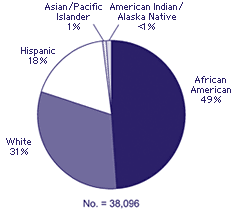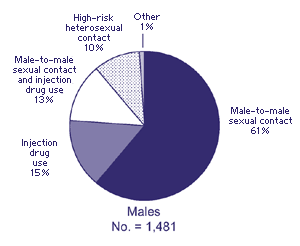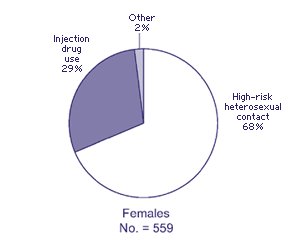Epidemiology: CDC Fact Sheet
View the PDF PDF - 699KB
HIV/AIDS is a growing problem among American Indians and Alaska Natives.
Even
though the numbers of HIV and AIDS diagnoses for American Indians and Alaska
Natives represent less than 1% of the total number of HIV/AIDS cases reported
to CDC’s HIV/AIDS Reporting System, when population size is taken into
account, American Indians and Alaska Natives in 2005 ranked 3rd in rates of HIV/AIDS
diagnosis, after African Americans and Hispanics [1]. American Indians and Alaska
Natives make up 1.5% (4.1 million people) of the total US population [2]. The
rate of AIDS diagnosis for this group has been higher than that for whites since
1995.
Statistics
HIV/AIDS in 2005
(The following bullets refer to the 33 states with long-term, confidential
name-based HIV reporting. See the box, before the References section, for a list
of the 33 states.)
- HIV/AIDS was diagnosed for an estimated 198 American Indians
and Alaska Natives (adults, adolescents, and children), representing 0.5% of
the total number of HIV/AIDS diagnoses reported for that year [1].
- The rate (per
100,000 persons) of HIV/AIDS diagnosis for American Indians and Alaska Natives
was 10.6, compared with 72.8 for African Americans, 28.5 for Hispanics, 9.0 for
whites, and 7.6 for Asians and Pacific Islanders.
- Women accounted for 29% of the
HIV/AIDS diagnoses among American Indians and Alaska Natives [1].
- From the beginning of the epidemic through 2005, AIDS was diagnosed for an
estimated 3,251 American Indians and Alaska Natives [1].
- From the beginning of
the epidemic through 2005, an estimated 1,657 American Indians and Alaska Natives
with AIDS had died [1]. In comparison, 235,879 whites, 211,559 African Americans,
77,125 Hispanics, and 3,383 Asians and Pacific Islanders with AIDS had died.
- Of
persons who had received a diagnosis of AIDS during 1997– 2004, American
Indians and Alaska Natives had survived for a shorter time than had Asians and
Pacific Islanders, whites, or Hispanics. After 9 years, 67% of American Indians
and Alaska Natives were alive, compared with 66% of African Americans, 74% of
Hispanics, 75% of whites, and 81% of Asians and Pacific Islanders [1].
- From the
beginning of the epidemic through 2005, AIDS had been diagnosed for an estimated
32 American Indian and Alaska Native children (younger than 13 years) [1].
|
Race/ethnicity of persons (including children) with HIV/AIDS diagnosed
during 2005

Note. Based on data from 33 states with long-term, confidential
name-based HIV reporting.
|
Transmission categories for American Indian and Alaska Native adults
and adolescents living with HIV/AIDS at the end of 2005

Note. Based on data from 33 states with long-term, confidential
name-based HIV reporting.
|
|
Transmission categories for American Indian and Alaska Native adults
and adolescents living with HIV/AIDS at the end of 2005

Note. Based on data from 33 states with long-term, confidential
name-based HIV reporting.
|
References
Refer to the Fact Sheet PDF PDF
- 693KB
Visit these sites to order free materials
+ Top of Page





